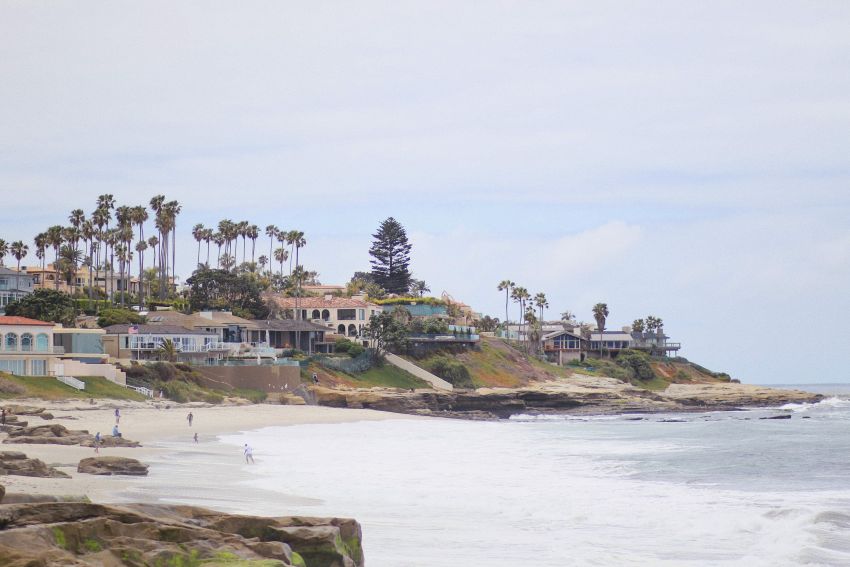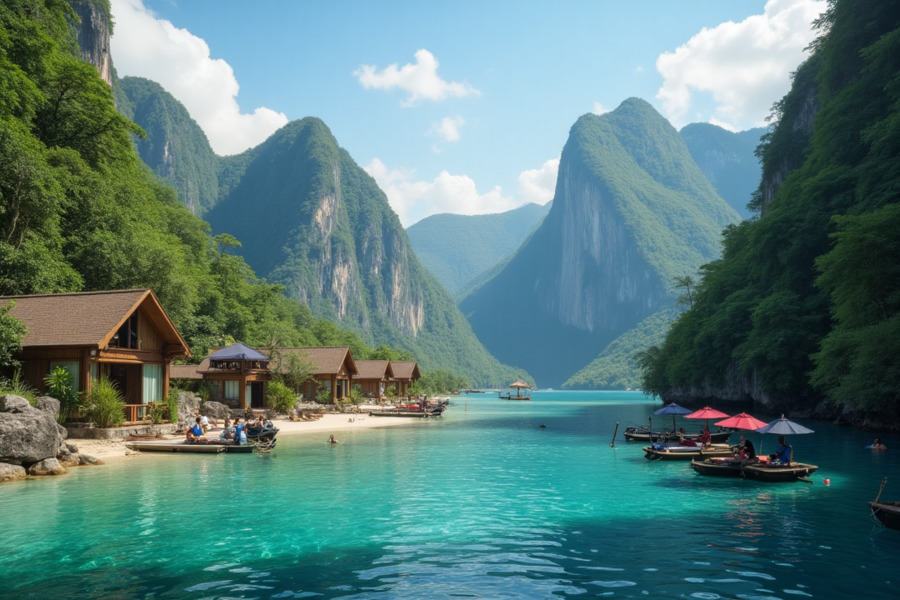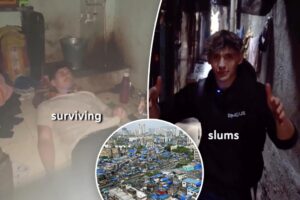≡-Disaster Tourism In Pacific Palisades Comes To An End With LA’s New Restriction – Viral of Today
<> Viral of Today <>
Friday, July 4, 2025In January 2025, the Pacific Palisades neighborhood of Los Angeles was ravaged by an out-of-control wildfire, leaving destruction in its wake. The fire, one of the most destructive in California’s history, ravaged over 6,800 structures, killed 12 individuals, and evacuated thousands of citizens. As the community begins the arduous process of reconstruction, the fire’s aftermath has also spurred the birth of an alarming new development: disaster tourism. In turn, the Los Angeles City Council has recently enforced a ban on tour buses from going into fire-scene areas as they try to prevent the exploitation of disaster for commercial means and ensure the reconstruction process is not further disrupted by the ingress of curious tourists.The Emergence of Disaster TourismDisaster tourism, also known as “dark tourism,” involves individuals visiting areas that have been affected by major disasters, often to witness the aftermath. In the case of the Pacific Palisades fire, commercial tour operators began offering trips to the fire-ravaged neighborhood shortly after it reopened to residents. Busloads of tourists, eager to witness the destruction firsthand, began descending on the area. While some argued that the tours could provide education about the impacts of wildfires and raise awareness, the overwhelming sentiment from the local community was that these tours were exploitative and insensitive to those who had lost their homes and loved ones.Councilmember Traci Park, who represents Pacific Palisades, voiced her strong disapproval during a Los Angeles City Council meeting. “They’re looking to profit off of destruction and other people’s losses. It’s really gross, and it needs to be stopped,” Park stated. She expressed concern not only about the ethical implications of such tours but also the practical challenges they posed for ongoing recovery efforts.City Council’s Response: A Ban on Disaster Tourism BusesIn response to growing public outcry, the Los Angeles City Council voted unanimously on July 1, 2025, to approve a motion restricting tour buses from entering any area that has been declared a natural disaster emergency zone. The ban applies to the Pacific Palisades fire zone and any future disaster zones that meet the criteria for emergency status. This decision has been hailed by many as an essential step in protecting the dignity of affected communities and ensuring that recovery efforts are not further obstructed by the influx of tourists.The motion, introduced by Councilmember Park, gives the Los Angeles Department of Transportation (LADOT) the responsibility of enforcing the new regulations. Under the ban, commercial tour buses will be prohibited from entering affected areas for the duration of the emergency response period. Furthermore, the motion calls for LADOT to consider implementing permanent restrictions on tour buses in areas like Pacific Palisades, which are known for their narrow streets, steep slopes, and limited access. These physical constraints make such areas ill-suited for large buses, even under normal circumstances.The Scale of the Pacific Palisades FireTo fully understand the significance of this ban, it is important to consider the scale of the Pacific Palisades fire and its devastating impact on the community. The fire, which began on January 7, 2025, was fueled by high winds and dry conditions, rapidly spreading across the Santa Monica Mountains. Over the course of 24 days, the fire consumed approximately 23,713 acres, destroying more than 6,800 structures. The affected areas included not only homes but also schools, businesses, and critical infrastructure. The fire’s devastation left thousands of residents displaced and in need of urgent recovery and support.The emotional toll on the residents of Pacific Palisades was immense, with many losing everything they had worked for over the years. In addition to the destruction of homes, significant environmental damage occurred, with many local wildlife habitats also decimated. The destruction of local landmarks, such as the Palisades Charter High School and popular businesses like the Reel Inn restaurant, added to the community’s sense of loss and grief. Given the scale of the damage, the rebuilding process has been slow and challenging, with thousands of people still living in temporary housing or under evacuation orders.The Practical Challenges of Disaster TourismBeyond the ethical concerns, disaster tourism also posed significant practical challenges for those working on the ground to clear debris and rebuild the community. Pacific Palisades is a neighborhood characterized by steep, winding roads and narrow streets, which make it difficult for large vehicles, including tour buses, to navigate. As reconstruction efforts continue, heavy machinery and emergency response teams need access to these roads to clear debris and restore essential services. The presence of tour buses, which often stop in the middle of the road or create traffic congestion, can impede these critical operations, delaying recovery efforts and endangering the safety of workers and first responders.Councilmember Park highlighted these concerns during the council meeting, emphasizing the need to prioritize the safety of those working in the affected areas. “It’s also dangerous because we’re still actively clearing fire debris,” she said. The presence of tour buses in such areas creates unnecessary distractions and hazards for emergency crews and recovery teams, further complicating the rebuilding process.Enforcement and Future ConsiderationsThe city’s efforts to enforce the ban will involve a collaboration between the Los Angeles Police Department (LAPD), LADOT, and other local agencies. Signs and barriers have been erected in affected areas to prevent unauthorized access, and checkpoints are being established to ensure compliance. Violators of the ban will face fines and other penalties, with the potential for further legal action if necessary.Looking forward, the city is also considering making the restrictions permanent in certain high-risk areas, such as Pacific Palisades. This would prevent similar issues from arising in the future and ensure that disaster tourism does not become a recurring problem in the aftermath of natural disasters.In addition to regulating disaster tourism, the city has emphasized the importance of responsible travel and tourism practices. While the ban on tour buses in disaster zones is a critical step in protecting affected communities, travelers can still support the recovery efforts by visiting other parts of Los Angeles that were not impacted by the fire. By patronizing local businesses and supporting rebuilding initiatives, tourists can help boost the local economy without contributing to the disruption of recovery efforts.Conclusion: A Respectful Approach to Post-Disaster TourismThe banning of disaster tourism buses from the fire area of Pacific Palisades is a significant breakthrough in the process of facilitating recovery and expressing respect for the dignity of the casualties of the wildfire. It is an impetus for responsible tourism practice aimed at maintaining the welfare of the local citizens and the safety of the individuals involved in the process of reinstating normality to disaster-struck locales. As the State of California continues to grapple with the effects of climate change and increased wildfires, it is critical for travelers, the authorities, and businesses to adopt a more mindful approach towards tourism subsequent to the disaster occurrence. As we do so, we can grant recovering communities the space and the aid they need towards mending themselves, reconstruction, and eventual thriving once more.References: California Governor’s Office, Los Angeles Fire Department«Enjoyed this post? Never miss out on future posts by following us»
This information will surprise you!
See also
- Read until the end to discover everything.
- Important information you need to know.
- Interesting facts and helpful tips.
Conclusion
Did you enjoy the news? Keep following us daily!













